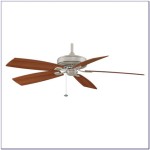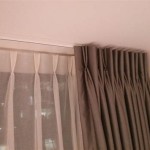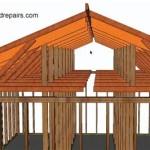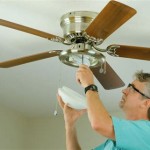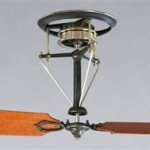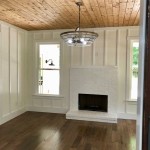How to Remove Ceiling Air Vents
Ceiling air vents, also known as registers or diffusers, are essential components of a home's HVAC (Heating, Ventilation, and Air Conditioning) system. They distribute conditioned air throughout rooms, ensuring consistent temperature and air quality. While often overlooked, these vents require periodic cleaning and maintenance, and occasionally, removal for repairs, painting, or replacement. This article provides a comprehensive guide on how to safely and effectively remove ceiling air vents.
Understanding the different types of ceiling air vents is crucial before attempting removal. The most common types include rectangular or square vents with adjustable louvers, round diffusers, and linear slot diffusers. Each type may have slightly different attachment mechanisms, influencing the removal process. Therefore, careful observation and identification of the vent type are the first steps.
Prior to commencing any work, safety precautions are paramount. Before removing any ceiling air vent, it is vital to turn off the HVAC system at the thermostat or breaker panel. This prevents dust and debris from circulating throughout the house and minimizes the risk of electrical hazards if wiring is accidentally exposed. Additionally, eye protection, such as safety glasses, and a dust mask or respirator are essential to protect against airborne particles and potential allergens. Gloves are also recommended to maintain hygiene and protect hands from sharp edges or rough surfaces.
Key Point 1: Gathering the Necessary Tools and Materials
Having the right tools and materials readily available streamlines the removal process and minimizes the risk of damage to the vent, ceiling, or surrounding area. The following list outlines the essential items needed:
*Screwdriver Set:
A screwdriver set with various head types (Phillips, flathead) is essential for vents secured with screws. Ensure the screwdriver size matches the screw heads to prevent stripping. *Utility Knife:
A utility knife can be helpful for scoring around the vent if it is painted over or stuck to the ceiling with caulk. *Step Ladder:
A sturdy step ladder is necessary to safely reach the ceiling vents. Choose a ladder with a height appropriate for the ceiling and ensure it is placed on a stable surface. *Gloves:
Work gloves protect hands and provide a better grip. *Safety Glasses:
Safety glasses are vital to protect the eyes from dust, debris, and falling objects. *Dust Mask or Respirator:
A dust mask or respirator prevents inhalation of dust, mold spores, and allergens. *Cleaning Supplies:
Cleaning supplies, such as a vacuum cleaner with a brush attachment, a damp cloth, and all-purpose cleaner, are needed to clean the vent and the surrounding ceiling area after removal. *Drop Cloth or Protective Sheet:
A drop cloth or protective sheet should be placed under the work area to catch dust and debris and protect the flooring. *Pry Bar (Optional):
A small pry bar may be needed if the vent is tightly secured or painted over. Exercise caution when using a pry bar to avoid damaging the ceiling. *Stud Finder (Optional):
A stud finder can be used to locate ceiling joists if you plan to install a new or different type of vent. This is important for secure mounting.Before starting, inspect the vent carefully. Look for visible screws, clips, or other fasteners. Take note of how the vent is attached to the ceiling, which will inform the removal technique. If the vent is painted over, scoring around the edges with a utility knife is necessary to prevent the paint from peeling off the ceiling during removal.
Key Point 2: Removing Different Types of Ceiling Air Vents
The removal process varies depending on the vent type and attachment method. The following sections detail the procedures for removing common types of ceiling air vents:
*Vents Secured with Screws:
This is a common attachment method. Locate the screws around the perimeter of the vent. Using the appropriate screwdriver, carefully remove each screw, placing them in a container to avoid losing them. Once all screws are removed, gently pull the vent straight down. If it is stuck, use a utility knife to score around the edges before pulling. *Magnetic Vents:
Magnetic vents are held in place by magnets. To remove one, grasp the vent firmly and gently pull it straight down. The magnets should release with moderate force. If the vent is stuck, carefully use a utility knife to score around the edges before pulling. *Vents with Spring Clips:
Some vents utilize spring clips to secure them to the ceiling. These clips are usually located on the sides or corners of the vent. To remove this type of vent, locate the clips and gently push them inward while simultaneously pulling the vent down. It may be necessary to use a flathead screwdriver to depress the clips if they are difficult to reach. Be cautious not to damage the ceiling or the vent during this process. *Vents with Turn-and-Lock Mechanisms:
Certain vents feature a turn-and-lock mechanism. These vents typically have a rotating lever or knob that needs to be turned to release the vent. Locate the lever or knob and turn it to the unlocked position. Once unlocked, the vent should easily detach from the ceiling. *Linear Slot Diffusers:
Linear slot diffusers can be more complex to remove. They often have a frame that is secured to the ceiling, and the diffuser itself is inserted into the frame. To remove, first, try to identify if there are screws holding the frame. If there are, remove them. If not, the diffuser may be held in place by friction or clips within the frame. Try gently sliding the diffuser out of the frame. If this does not work, consult the manufacturer's instructions for specific removal procedures.Once the vent is removed, inspect the surrounding area for any debris, dust, or mold. Clean the area thoroughly using a vacuum cleaner with a brush attachment. Wipe down the ceiling surface with a damp cloth and all-purpose cleaner to remove any remaining residue. This is also a good opportunity to inspect the ductwork for any signs of damage or leaks. If any issues are detected, it is recommended to consult with a qualified HVAC technician.
Key Point 3: Cleaning and Maintaining Removed Air Vents
After removing the ceiling air vents, cleaning them is an essential step to improve air quality and maintain the efficiency of the HVAC system. Dust, dirt, and allergens accumulate on the vents over time, hindering airflow and potentially contributing to respiratory problems. The following steps outline the process of cleaning and maintaining removed air vents:
*Initial Dust Removal:
Begin by removing loose dust and debris from the vent using a vacuum cleaner with a brush attachment. This will prevent the dust from spreading during the cleaning process. Pay particular attention to the louvers and any crevices where dust tends to accumulate. *Soaking the Vent:
Fill a tub or large sink with warm water and add a mild detergent or dish soap. Submerge the vent in the soapy water and allow it to soak for 15-20 minutes. This will loosen stubborn dirt and grime. *Scrubbing the Vent:
After soaking, use a soft-bristled brush or sponge to scrub the vent thoroughly. Pay attention to the louvers, frame, and any other areas where dirt is concentrated. For particularly stubborn dirt, use a specialized cleaning solution designed for HVAC components. *Rinsing the Vent:
Once the vent is thoroughly scrubbed, rinse it with clean water to remove all traces of soap. Ensure that all soap residue is removed to prevent it from attracting dust in the future. *Drying the Vent:
Allow the vent to air dry completely before reinstalling it. Alternatively, use a clean cloth to dry the vent thoroughly. Ensure that all moisture is removed to prevent the growth of mold or mildew. *Inspection and Repair:
While cleaning the vent, inspect it for any signs of damage, such as cracks, dents, or broken louvers. If any damage is detected, consider repairing or replacing the vent. Damaged vents can compromise the efficiency of the HVAC system and may require replacement. *Reinstallation:
Once the vent is clean, dry, and inspected, it is ready for reinstallation. Follow the reverse of the removal process to reattach the vent to the ceiling. Ensure that all screws, clips, or other fasteners are securely in place.Periodic maintenance of ceiling air vents is crucial for maintaining optimal air quality and HVAC system efficiency. It is recommended to clean the vents at least twice a year, or more frequently if there are pets or allergies in the household. Regular cleaning not only improves air quality but also extends the lifespan of the HVAC system by allowing it to operate more efficiently.
Removing and cleaning ceiling air vents is a relatively straightforward task that can be accomplished with basic tools and a little patience. By following the steps outlined in this article, homeowners can effectively remove, clean, and maintain these essential components of their HVAC system, contributing to a healthier and more comfortable indoor environment.

How To Replace Your Ac Vent Covers Clf Services

Replacing A Heat Vent Register

How To Remove Ducted Air Conditioning Vents Quickair

Ac Vent Cover Removal Keystone Rv Forums

How To Remove These Darn Vents Hometalk

How To Open And Close Ceiling Air Vents
Replacing A Central Air Conditioner Return Vent Cover All About The House
The Drywall Around My Ceiling Air Vent Is All Broken Up What Can I Fill Space With So A New Cover Be Ed In Quora

Marc Poulos Painting Before A Room Remove Ceiling Vents

Easy Way To Seal Off Old Ceiling Vents That Don T Close Tightly Hunker
Related Posts

